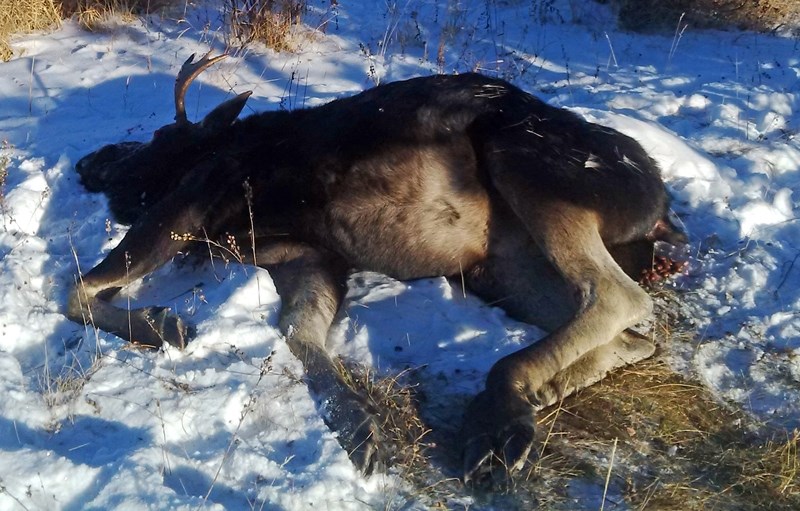There were fewer hunters in the district for the moose and deer season this year, said a local Fish and Wildlife officer.
“I did notice a decline in hunters this year,” said Adam Mirus during an interview Dec. 9. The moose and deer season ended on Monday, Nov. 30.
He's been in charge of the district Fish and Wildlife office since 2007, and said this hunting season brought out the fewest hunters he's seen.
“The general number of hunters was down, in our area, significantly,” he said.
The Fish and Wildlife officer wasn't sure if that decline was because of the economic slowdown, but added there are costs involved in going on a hunt in terms of fuelling up a truck for a hunting trip and buying the proper licences and tags.
Otherwise, the past moose and deer season was about average in terms of complaints and unlawful activity, he said.
“That being said, we still have a number of investigations to look into,” he said.
In some cases, investigations can continue into the spring, and sometimes result in search warrants and seizures of vehicles, he said.
The cow elk season runs until Dec. 20 before it breaks until Jan. 1. That season then comes to a close on Jan. 20.
Biologists, who assess the numbers of animals in the wild, provide information that helps determine the limits and quotas for hunting seasons. They fly grid patterns from January to March to find out how the animal populations are doing. If there are lower numbers of animals in an area, there won't be as many tags made available to hunt them, he said.
There hasn't previously been such an elk season, but this year, elk populations have increasingly been feeding on haystacks at local farms, he said.
“That hay is potentially worth a lot of money (for farmers),” he said.
So this year's cow elk season was planned to help manage the elk population and thus reduce the potential damage to producers' hay bales, he said.
“We just ask that farmers who are having elk issues give us a call right away; there are options to mitigate damage to hay crop or stacks,” he said.
Those options include surrounding haystacks with straw bales so the elk cannot get through and installing a variety of barriers such as stack wrap fencing, which is essentially a seven-foot plastic vest that can wrap multiple bales at once. Farmers can also call hunters who have appropriate tags, he said.
The cougar season got underway on Dec. 1 and will end March 1.
There were recently two close encounters with cougars on Nov. 26. In one instance, a resident in the Elkton area opened the door to let the dog out when a cougar attacked the canine. That individual then shot the cougar off of the dog. That same day, a group of three hunters realized they were being stalked by a cougar and shot it in self-defence, he said.
“I hope we don't have a cougar winter like last year. We're just asking people in the area to be vigilant with their pets and children, and if they're letting them out, do so in pairs and supervised,” he said.
If a cougar is found on private land and poses a threat to livestock or people, it can be shot. Alternatively, people who have spotted a cougar in their area and are concerned can contact Fish and Wildlife, he said.
“We will respond to cougar sightings,” he said.
The district Fish and Wildlife office can be reached at 403-638-3805.
"I did notice a decline in hunters this year."Adam Mirusdistrict Fish and Wildlife officer.



